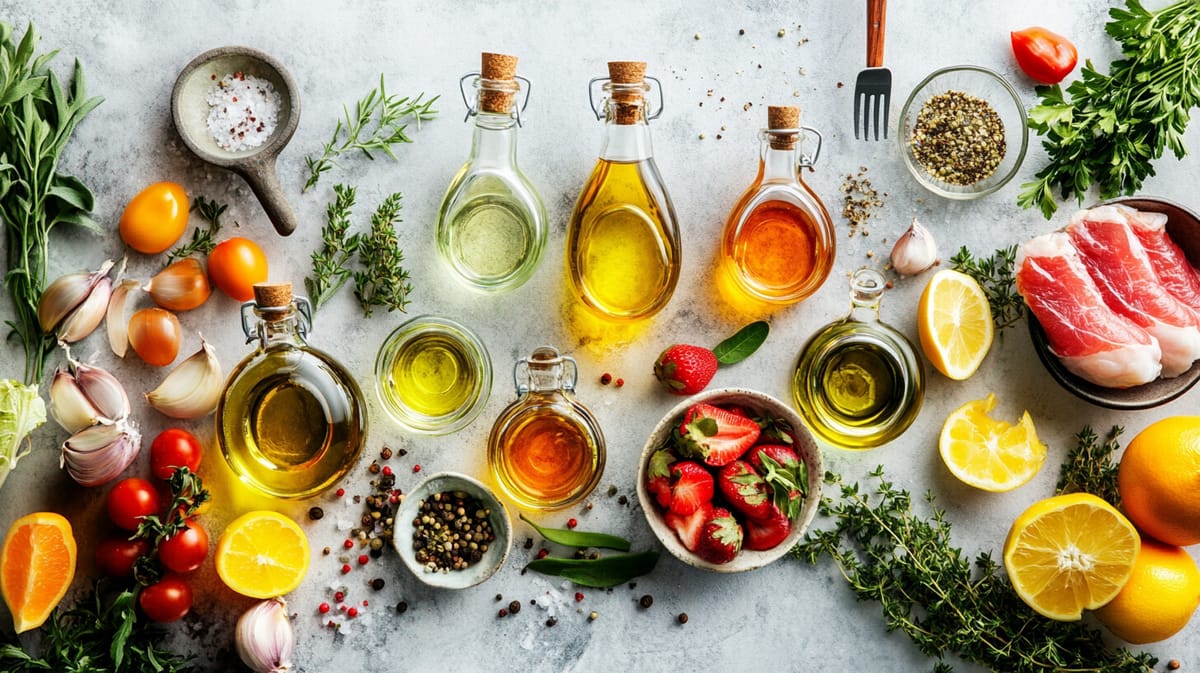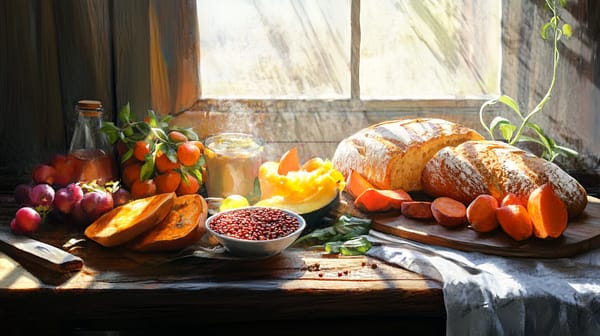Unleash Flavor Magic: Master the Art of Marinades

The Basics of Meal Prepping
Mastering meal preparation starts with understanding the fundamentals. This involves learning how to create a well-rounded grocery list, bulk cooking proteins, grains, and vegetables, and combining everything effectively throughout the week.
Once you've got the basics down, the next step is ensuring everything tastes delicious with enough variety from week to week. That's where marinades come into play. Marinades not only tenderize meat but also infuse vegetables with incredible flavor.
The Four Elements of a Perfect Marinade
While you can always find specific marinade recipes, you can also improvise using this simple formula:
- Fat (25%): Oil prevents food from drying out in the fridge and during cooking. Neutral oils like canola, grapeseed, or light olive oil work well. For bolder flavors, try peanut, sesame, or pumpkin seed oil. A 50/50 mix of neutral and flavorful oil is ideal. Avoid coconut oil, butter, and animal fat as they solidify when chilled.
- Acid (25%): The key to tenderizing proteins. Use any vinegar, citrus juice, buttermilk, or yogurt. Limit to 25% of the marinade to avoid denaturing the protein.
- Flavoring: Get creative with salt, herbs, spices, or flavorful condiments like soy sauce, mustard, ketchup, Worcestershire, or teriyaki sauce. Finely minced garlic, ginger, shallots, or lemongrass add depth. A touch of sugar, honey, or maple syrup can be added but may burn at high heat.
- Liquid: The marinade should be liquid enough to coat the food evenly. Use 1/4 to 1/2 cup marinade per pound of food.
Marinating Times
Marinating times vary based on the delicacy of the protein:
- Vegetables: 15-30 minutes
- Fish and seafood: 15-30 minutes
- Boneless chicken: 30 min - 2 hours
- Bone-in chicken: 1-6 hours
- Pork chops or tenderloin: 2-4 hours
- Pork shoulder or ribs: 4-8 hours
- Beef, lamb, or game (except ground): 2-8 hours
When ready to cook, gently wipe or let excess marinade drip off the food. Blot with a paper towel if grilling or searing for better browning.
For food safety, never reuse marinades that have been in contact with raw meat. The flavors will also be diminished after the first use.
By understanding the basic elements of a marinade and ideal marinating times, you can concoct endless flavor combinations to elevate your meal prep and keep your taste buds excited week after week. Get creative and let your inner chef shine!




